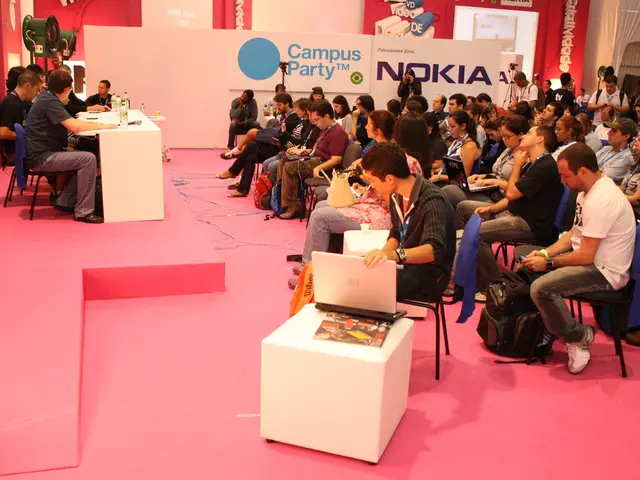Chinese companies YMTC and CXMT join forces to boost local production of High-Bandwidth Memory (HBM) in China, combining their hybrid bonding and DRAM expertise for faster, more efficient domestic manufacturing.
In the rapidly evolving world of semiconductors, China is making significant strides in High Bandwidth Memory (HBM) technology, a premium DRAM stack commonly used in high-performance AI accelerators.
The U.S. Bureau of Industry and Security has added controls on HBM in its December 2024 rulemaking, indicating a growing global focus on this technology. Amidst these developments, Chinese firms are actively participating in the HBM landscape.
Tongfu Microelectronics, a key player in the Chinese HBM packaging chain, became active in HBM assembly around 2018. The company, which introduced itself into the HBM market, is now moving into HBM assembly, a significant step towards self-sufficiency.
Meanwhile, ChangXin Memory Technologies (CXMT) is making headway in HBM production. Having successfully produced HBM2, CXMT is now pursuing HBM3 on an accelerated timetable. Multiple Chinese outlets and researchers predict a 2026-2027 production window for CXMT's HBM3 and HBM3E.
Yangtze Memory Technologies Corp. (YMTC), another Chinese firm, is preparing to enter DRAM fabrication. YMTC's 'Xtacking' architecture, a leading implementation of hybrid bonding, has been used to mass-produce 3D NAND for years. In a strategic move, YMTC is reportedly exploring a partnership with CXMT to target High Bandwidth Memory.
The Chinese government is keen on reducing reliance on Samsung, SK hynix, and Micron, the big-three memory giants. The U.S. is also tightening controls around Chinese fabs, as shown by TSMC's Nanjing plant losing fast-track status. This creates a conducive environment for Chinese firms to develop their HBM packaging methods.
The wider HBM industry is steadily migrating toward hybrid bonding to raise bandwidth and improve thermal performance as stack heights grow. Advanced packaging is becoming a practical gate on HBM supply, making outsourcing semiconductor assembly and test virtually unavoidable if fabs want to scale output.
Tool availability and customer qualification will determine whether Chinese HBM can scale beyond the domestic market. As the HBM market's growth engine, driven by GPUs and custom AI silicon, continues to expand, it remains to be seen how Chinese firms will navigate the complexities of this competitive landscape.
For up-to-date news, analysis, and reviews on this topic, it is recommended to follow Tom's Hardware's Google News updates.
Read also:
- Peptide YY (PYY): Exploring its Role in Appetite Suppression, Intestinal Health, and Cognitive Links
- Toddler Health: Rotavirus Signs, Origins, and Potential Complications
- Digestive issues and heart discomfort: Root causes and associated health conditions
- House Infernos: Deadly Hazards Surpassing the Flames








